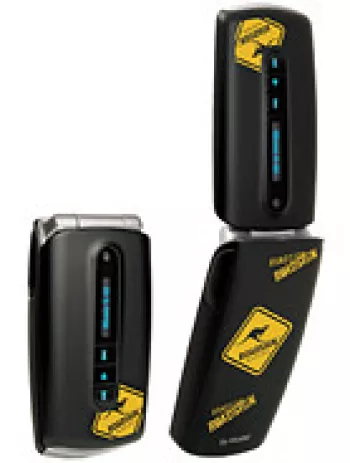
Design and Build
The Alcatel OT-S853, announced in the first quarter of 2005, boasts a compact design with dimensions of 103 x 47 x 20 mm (4.06 x 1.85 x 0.79 in) and weighs in at a lightweight 93 g (3.28 oz). Its petite frame fits comfortably in the palm of your hand, making it an ideal phone for those who prefer smaller, more manageable devices. The phone utilizes a Mini-SIM and features a robust build, which was considered quite durable for the handsets of its time.
Display
The OT-S853 is equipped with a 2.0-inch TFT display that showcases an array of 256K colors. The resolution of 176 x 220 pixels provides a pixel density of approximately 141 pixels per inch, delivering acceptable visual clarity given the standards at the time. While the display size might seem small by today’s criteria, it was typical in an era where compact features were prevalent over expansive displays.
Camera Capabilities
Featuring a single 1.3 MP main camera, the Alcatel OT-S853 provides basic photography functionality. Users could capture vibrant images and record video clips, meeting the needs of general consumers who looked for multipurpose phones. Despite the absence of a selfie camera, the rear camera sufficiently supported everyday snapping and media generation typical for basic multimedia phones during the mid-2000s.
Sound Experience
One of the intriguing aspects of the Alcatel OT-S853 was its emphasis on quality sound. It houses a 2.1 Stereo Surround Sound system featuring two tweeters and one bass loudspeaker, designed to deliver an enveloping audio experience. This made it particularly appealing for music enthusiasts interested in MP3, AAC, and AAC+ ringtone support. Though lacking a 3.5mm jack, the phone nonetheless provided a substantial audio experience through its internal speakers.
Network and Connectivity
In terms of connectivity, the OT-S853 was equipped to support GSM networks with a 2G range covering GSM 900 / 1800 / 1900 bands. It offered GPRS and EDGE Class 10 for data transmission, enabling decent browsing and messaging capabilities. Connectivity options were further expanded with Bluetooth 2.0 and an infrared port, alongside miniUSB support, which all together facilitated a diverse range of device interactions and data transfer methods.
Memory and Storage
The device comes with 10MB of internal storage, which was fairly standard at the time for storing essential apps, messages, and contacts. Additionally, the Alcatel OT-S853 provides a miniSD slot, supporting expandable memory up to 1GB. This allowed users to keep a modest collection of multimedia files on hand, which was essential for those who utilized the phone’s sound and camera capabilities extensively.
Battery Life
Powering the Alcatel OT-S853 is a removable Li-Ion 800 mAh battery. This battery capacity ensured users would have plenty of standby time, reaching up to 330 hours, and a talk time of up to 8 hours. Considering the phone’s feature-heavy design for its day, the battery life was quite impressive, providing ample usage time between charges for the average user.
Features and User Interface
The Alcatel OT-S853 operated on a Feature Phone OS, a common operating system before the rise of widespread smartphone platforms. It offered SMS, MMS, Email, and Instant Messaging for communication. The WAP 2.0/xHTML browser enabled access to online content. Furthermore, its support for Java MIDP 2.0 allowed users to download and engage with a variety of java-based applications and games, enhancing the entertainment and functionality spectrum.
Conclusion
The Alcatel OT-S853 stands out as a quintessential example of mid-2000s mobile phone technology. While now discontinued, it stirred plenty of interest in its time due to its robust sound system, decent battery life, and supportive multimedia features. Though today’s mobile environment has evolved immensely with bigger screens and more advanced cameras, devices like the OT-S853 paved the way for many technological advances, offering a retrospective glimpse into the formative phases of mobile multimedia integration.
Key Features of Alcatel OT-S853
- Supports GSM 900 / 1800 / 1900 networks with GPRS and EDGE (Class 10)
- Compact design with dimensions of 103 x 47 x 20 mm and a weight of 93 g
- 2.0-inch TFT display with 256K colors and a resolution of 176 x 220 pixels
- Expandable memory with miniSD card slot up to 1 GB
- 1.3 MP main camera with video recording capability
- Stereo surround sound with two tweeters and one bass loudspeaker
- Bluetooth 2.0 and Infrared connectivity
- Built-in FM radio and miniUSB port
- Supports multiple messaging options: SMS, MMS, Email, and Instant Messaging
- Removable Li-Ion 800 mAh battery with up to 330 hours standby and 8 hours talk time
Disadvantages of alcatel OT-S853
- Limited network support: Only 2G GSM bands available, which is outdated by modern standards.
- Discontinued product: No longer supported with updates or new features.
- Small internal storage: Only 10MB of internal memory which is insufficient for modern usage.
- Limited external storage expansion: Supports miniSD cards up to only 1 GB.
- Lack of advanced camera features: Single 1.3 MP main camera without a front-facing camera.
- No Wi-Fi capability: Unable to connect to wireless internet networks.
- No GPS positioning feature: Lack of location-based services capability.
- No 3.5mm headphone jack: Requires adapters or proprietary connectors for audio output.
- Basic display technology: 176 x 220 pixel resolution with low pixel density.
- Limited communication options: Lacks modern connectivity features such as NFC.



















View Also
More Phones
All Rights Reserved +14268 Phones © Mobilawy 2025

























